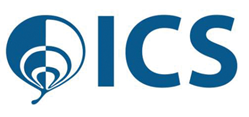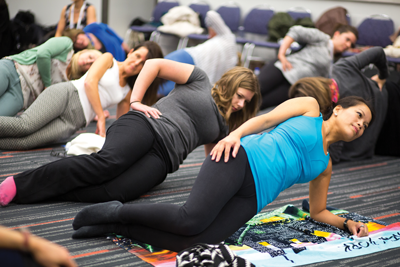Origins of pelvic floor physiotherapy
Physiotherapy, and in particular pelvic floor muscle training (PFMT) is nowadays first-line management for pelvic floor dysfunction (PFD). PFMT is originally attributed to Dr Arthur Kegel, hence the term Kegel exercises. Indeed, he was the first one to report success with this intervention in treating stress urinary incontinence (SUI) in his paper ‘Progressive resistance exercise in the functional restoration of the perineal muscles’ back in 1948 [1]. However, PFMT actually entered modern medicine in 1936 courtesy of Margaret Morris, a physiotherapist at St Thomas’ Hospital in London.
Margaret Morris wrote in her paper the importance of teaching the conscious control of tension and relaxation of the pelvic floor muscles for the prevention and treatment of urinary and faecal incontinence. She encouraged women to practise trying to “invert the sphincters… until it becomes habitual” and that this should be performed to the strains of Schubert’s waltzes 16, no 2 [2].
Similarly Miss Minnie Randell OBE, Principal of the School of Massage and Medical Gymnastics at St Thomas’, introduced many ideas related to continence care that are used currently. These measures include the squatting position to aid defecation, the use of PFMT with concomitant muscles and the functional use of PFMT before activities that increase intraabdominal pressure [3,4].
The beginnings of the role of a pelvic floor physiotherapist, as we know it today was facilitated in the 1970s by encouragement of the physiotherapist Dorothy Mandelstam, or the Queen of Continence, as she was affectionately called. She initiated the change in continence care in the UK whilst working for the Disabled Living Foundation. She was the first non-medical member and the first physiotherapist to be admitted to the International Continence Society (ICS*) in 1975.
Jo Laycock joined Dorothy at the ICS in 1985 and together with Jeannette Haslam, Marijke Slieker-ten Hove, Kari Bø and others encouraged the participation at the meetings of many other physiotherapists. In 1988 the first research papers by physiotherapists Kari Bø and Jo Laycock were presented at the ICS annual scientific meeting. Since those days when physiotherapy was poorly understood, the physiotherapy committee at ICS has grown, and a high number of physiotherapy studies and accepted abstracts with some of them receiving awards, has catapulted and consolidated our role in continence care.
Why is it important to remember the history of our profession? It is because of the work and the perseverance of these pioneers that we find ourselves today in the position of first-line autonomous care providers for men and women with pelvic floor dysfunction. So, has our work changed throughout the last eight decades and in what are we most interested these days?
Pelvic floor physiotherapy in the 21st century
Before we embark onto some of the hot topics at the moment within pelvic floor and continence physiotherapy we need to acknowledge the current guidelines for the management of pelvic floor dysfunction. There are few other specialties within the physiotherapy profession that have the robust and extensive array of clinical evidence and support for the management of their patients that pelvic floor physiotherapists have. In the UK, physiotherapy is first-line management for SUI and mixed urinary incontinence (MUI) for women and men [5], faecal incontinence [6] and pelvic organ prolapse [7]. In particular PFMT for SUI and MUI has the highest grade of evidence and this is due to multiple studies and the large number of patients involved in these research studies. International and European guidelines also recommend physiotherapy as first-line management for MUI [8,9].
We know that in some circumstances the use of biofeedback helps our patients to comply with their exercise regime [10] and that in turn decreases or may even cure their urinary symptoms. The use of neuromuscular electrical stimulation may help those patients with less awareness and strength of the pelvic floor muscles [11]. There is some evidence that bladder training is an effective intervention in women with urgency and MUI and does not have any side-effects [5,8,9]. There is also evidence that for women having their first baby, PFMT can prevent urinary incontinence up to six months after delivery and is an appropriate treatment for women with persistent postpartum urinary incontinence [12].
Physiotherapy is also part of the holistic management of patients with chronic pelvic pain (CPP) [13] and is a growing area in which physiotherapists are involved. With less evidence, but still first-line management due to the lack of side-effects, PFMT and biofeedback should also be offered to patients with faecal incontinence [14] and functional constipation [15]. Abdominal massage for constipation has increasing evidence in certain populations. As part of the overall management, pelvic floor physiotherapists also give advice to women with urinary incontinence on weight loss, reduction of caffeine, fluid intake, cessation of smoking and an increase and / or modification of physical exercise [12]. These interventions are important in the reduction of symptoms but more importantly improve the quality of life of these patients. It is well-known that untreated pelvic floor dysfunction can lead to social isolation, reduced emotional wellbeing, embarrassment and reduced work productivity [8].
What’s hot in pelvic floor physiotherapy?
What is the main difference between the days of Margaret Morris and nowadays? Our well-established position within the national healthcare system; as previously discussed, pelvic floor physiotherapy is first-line management of PFD. Because of this, we are an integral part of the multidisciplinary team (MDT) and with that further specialisation and development of extended scope practitioner skills has rocketed. It is now common for physiotherapists to fit vaginal pessaries, to perform urodynamic studies, to use diagnostic ultrasound as part of the pelvic floor assessment and to prescribe medication as part of their role within the MDT or as a sole practitioner. Patients are becoming more complex and many physiotherapists have further specialised into specific areas of interest, for example the neurogenic bladder, bowel dysfunction, sexual and pelvic pain symptoms, or a combination of all of them.
Physiotherapists traditionally treated urinary symptoms whereas bowel symptoms used to be managed by clinical nurse specialists, but now it seems that pelvic floor physiotherapists are taking the bowel world under their belt. The discussion about the use of the squatting position as an effective way of improving defecation is quite popular on social media, but Minnie Randell already gave that advice to her patients back in the 1940s. The use of devices to contain faecal incontinence as well as the use of rectal irrigation and abdominal massage are becoming increasingly popular amongst pelvic floor physiotherapists.
Compliance with physiotherapy is a challenge that we face in our day-to-day clinical practice and tackling that is one of our main priorities at the moment. Despite that, PFMT alone is still the most effective way of treating SUI and MUI; we seem to have a selection of devices that have increased compliance with exercise routine by making the treatment more attractive to the patient. The use of mobile applications or intravaginal devices help the patient to have a routine and visualise their progress in between physiotherapy sessions.
There is evidence to suggest that the use of biofeedback [10] as well as regular sessions with the physiotherapist increases the chance of finishing treatment and the likelihood of improving and / or curing symptoms. Patients that self-refer to the physiotherapy department are more likely to comply with the treatment given and as a consequence improve their symptoms. We must remember that women underreport their pelvic floor symptoms [16] so easy access to our services could potentially save time for other healthcare practitioners, reduce secondary care waiting lists, improve patient satisfaction and decrease non-attendance appointments [17]. Improving access to our services should be on our agenda.
A hot topic at the moment is the management of urinary symptoms in men [18]. We have started to see minor evidence behind the role of PFMT and biofeedback in the management of urinary symptoms in men [18}. As clinicians we have been observing for a long time that some patients do improve with our input, however in order to maximise resources and effectiveness in the future, it is imperative that we learn how to phenotype patients before a referral onto physiotherapy is made. This should be a direction for future research.
The history of management of urinary symptoms in men is similar to the previous management of pelvic organ prolapse (POP) in women. For many years, we had women referred to our departments who improved their POP by doing PFMT and yet we used to hear that patients were referred with no expectations of improving their symptoms. The POPPY trial clarified the type of POP and the best intervention to change POP symptoms [19] and identified us as first-line management.
At last year’s ICS annual scientific meeting in Montreal, Canada one of the urogynaecologists presenting to the audience raised the question that, as physiotherapists, we have been asking for a long time. If orthopaedic surgeons request physiotherapy pre- and post-surgery, why is pelvic floor surgery different to this? There are indications that the risk of developing faecal incontinence is increased at one and three years after abdominal hysterectomy and at three years after vaginal hysterectomy [20]. Compared with women without prolapse, women who had a hysterectomy for prolapse were at increased risk for subsequent pelvic floor surgery [21]. The long-term outcome following surgical correction of POP is poor, and in a prospective study, 41% of women had recurrence of POP at five years and 10% of women had undergone a repeat POP operation within five years of their initial operation [22].
McClurg et al. are investigating the role of preoperative PFMT in limiting the recurrence of POP and should this prove to be beneficial, it has huge potential to change our clinical practice [23]. Similarly, we should start thinking about the best intervention for those women that are at risk of developing faecal and / or urinary incontinence following gynaecological surgery.
"Patients are becoming more complex and many physiotherapists have further specialised into specific areas of interest."
These days, the use of manual therapy for the treatment of pelvic floor pain disorders is part of the multidisciplinary holistic approach. Manual therapy has always been one of our core skills; however in an era where clinical evidence superimposed our clinical reasoning and the treatments available within the NHS was limited, manual therapy was ignored for a very long time. With the support from the European Guidelines of Chronic Pelvic Pain on our side we have started to see a rise in the number of physiotherapists looking to further develop their manual therapy skills and both patients and their medical practitioners requesting it.
Prevention is better than cure. Pregnant women should be offered PFMT during the antenatal period as this reduces both urinary and faecal incontinence [12] in the postpartum period. We know that who instructs the exercise determines whether women will be more likely to comply or completely ignore the advice. There have been a number of discussions on social media about treatment in the early postpartum period and how the UK should embrace the French method of offering all women six sessions of physiotherapy postpartum, however this method still needs to be proven to decrease the incidence of PFD in the general population before we embark onto such a clinical change. The question is already there. It is almost certain that we will in time come up with the best solution for our women in the postnatal period and with that a change in clinical practice may occur.
Conclusion
There is no doubt that our profession has moved forward because of our involvement in research. In 1994 Bø and Stein proved Minnie Randell’s hypothesis about the use of abdominal, gluteal and adductor muscles with PFMT 50 years later [24]. Similarly Miller et al. [25] demonstrated the effectiveness of the functional bracing of the pelvic floor muscles before activities that increase intraabdominal pressure, currently known as ‘The Knack’, that Minnie Randell suggested more than 50 years ago. Considering this, it does not seem that our interventions have changed that much in the last 80 years yet we can now confirm that they are effective treatment interventions. What is in the future for us? Virtual physiotherapy? In order to maintain our position as first-line continence care providers in our economically driven NHS, it is imperative that we continue to demonstrate that our interventions are cost-effective. As Janette Haslam very eloquently stated “Research must continue to search for truths, but we have the responsibility to acknowledge the influence of the past and ensure that future research is of relevance and high quality” [25].
I invite you to join me at ICS 2016 in Tokyo, which will undeniably be an unequalled scientific meeting. The ICS is a multidisciplinary association pertaining to the highest scientific standards and bringing a spectrum of the very best incontinence and pelvic floor disorder research from basic science to large clinical trials. Submit your abstract by 1 April for consideration and review the programme to see the many activities specifically targeted to physiotherapists.
TAKE HOME MESSAGE
-
Physiotherapy should be first-line management for PFD.
-
Research is high on the pelvic
floor physiotherapists agenda in order to maintain our role within continence care.

*International Continence Society
www.ics.org
References
1. Kegel AH. Progressive resistance exercise in the functional restoration of the perineal muscles. Am J Obstet Gynaecol 1948;56:238-49.
2. Morris M. Maternity and postoperative exercises. London, UK; William Heinemann (Medical Books) Ltd; 1936.
3. Randell M. Training for childbirth from the mother’s point of view. London, UK; J&A Churchill Ltd; 1941:58-9.
4. Randell M. Fearless childbirth. London, UK; J & A Churchill Ltd; 1948:28-9 and 64-5.
5. National Institute of Health and Care Excellence. Urinary incontinence: the management of urinary incontinence in women. Clinical Guideline 171 edition. London, UK; NICE; 2015.
6. National Institute of Health and Care Excellence. The Management of Faecal Incontinence in Adults. Clinical Guideline 49 edition. London, UK; NICE; 2007.
7. Hagen S, Stark D, Glazener C, et al. Individualised pelvic floor muscle training in women with pelvic organ prolapse (POPPY): a multicentre randomised controlled trial. The Lancet 2014;383(9919):796-806.
8. Abrams P, Cardozo L, Khoury AAD, Wein A. 5th International Consultation on Incontinence. Paris, France; ICUD-EAU; 2013.
9. Lucas MG, Bosch RJ, Cruz FR, et al. EAU guidelines on urinary incontinence. European Association of Urology; 2014.
10. Herderschee R, Hay-Smith EJC, Herbison GP, et al. Feedback or biofeedback to augment pelvic floor muscle training for urinary incontinence in women. Cochrane Database of Systematic Reviews 2011;7:
11. Berghmans B, Hendriks E, Bernards A, et al. Electrical stimulation with non-implanted electrodes for urinary incontinence in men. Cochrane Database of Systematic Reviews 2013;6.
12. Boyle R, Hay-Smith EJC, Cody JD, Mørkved S. Pelvic floor muscle training for prevention and treatment of urinary and faecal incontinence in antenatal and postnatal women. Cochrane Database of Systematic Reviews 2012;10.
13. Engeler D, Baranowski AP, Elneil S. European Association of Urology guidelines on Chronic pelvic pain. European Association of Urology; 2012.
14. Norton C, Cody JD. Biofeedback and/or sphincter exercises for the treatment of faecal incontinence in adults. Cochrane Database of Systematic Reviews 2012;7.
15. Woodward S, Norton C, Chiarelli P. Biofeedback for treatment of chronic idiopathic constipation in adults. Cochrane Database of Systematic Reviews 2014;3.
16. Shaw C, Tansey R, Jackson C, et al. Barriers to help - seeking in people with urinary problems. Family Practitioner 2001;18:48-52.
17. Cook T, Hove R. Project to evaluate patient self-referral to women\'health physiotherapy pilot series. 2013.
18. Anderson CA, Omar MI, Campbell SE, et al. Conservative management for postprostatectomy urinary incontinence. Cochrane Database of Systematic Reviews 2015;(1).
19. Hagen S, Stark D. Conservative prevention and management of pelvic organ prolapse in women. Cochrane Database of Systematic Reviews 2011;12.
20. Forsgren C, Zetterstrom J, Lopez A, et al. Effects of hysterectomy on bowel function: a three-year, prospective cohort study. Dis Colon Rectum 2007;50(8):1139-45.
21. Blandon R, Bharucha A, Melton LJ, III, et al. Incidence of pelvic floor repair after hysterectomy: A population-based cohort study. Am J Obstet Gynecol 2007;197(6):664.
22. Lube KM, Boero S, Choe JY. The demographics of pelvic floor disorders; current observations and future projections. Am J Obstet Gynecol 2001;184:1496-501.
23. McClurg D, Hilton P, Dolan L, et al. Pelvic floor muscle training as an adjunct to prolapse surgery: a randomised feasibility study. International Urogynecology Journal 2014;25(7):883-91.
24. Bø K., Stien R. Needle EMG registration of striated urethral wall and pelvic floor muscle activity patterns during cough, valsalva, abdominal, hip adductor, and gluteal muscle contractions in nulliparous healthy females. Neurourol Urodyn 1994;13(1):35-41.
25. Miller JM, Ashton-Miller JA, DeLancey JO. A pelvic muscle precontraction can reduce cough-related urine loss in selected women with mild SUI. J Am Geriatr Soc 1998;46:870-74.
26. Laycock J, Haslam J. Therapeutic Management of Incontinence and Pelvic Pain: Pelvic Organ Disorders. London, UK; Springer; 2002.
Declaration of competing interests: None declared.





